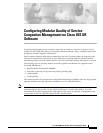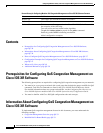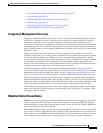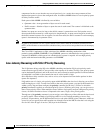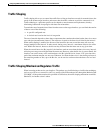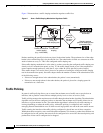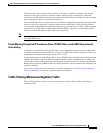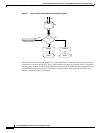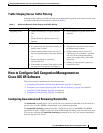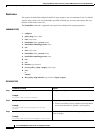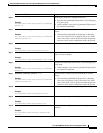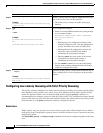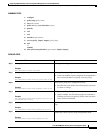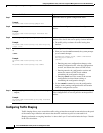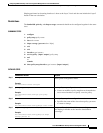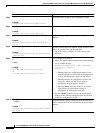
Configuring Modular Quality of Service Congestion Management on Cisco IOS XR Software
Information About Configuring QoS Congestion Management on Cisco IOS XR Software
QC-35
Cisco IOS XR Modular Quality of Service Configuration Guide
Traffic policing is often configured on interfaces at the edge of a network to limit the rate of traffic
entering or leaving the network. In the most common traffic policing configurations, traffic that
conforms is sent and traffic that exceeds is sent with a decreased priority or is dropped. Users can change
these configuration options to suit their network needs.
For Cisco IOS XR software, a single-rate, two-color policer is supported that provides one token bucket
with two actions for each packet: a conform action and an exceed action. Traffic policing provides a
certain amount of bandwidth management by allowing you to set the burst size (Bc) for the committed
information rate (CIR). When the peak information rate (PIR) is supported, a second token bucket is
enforced and the traffic policer is then called a two-rate policer.
Note The two-rate policer and two-token bucket algorithm is not supported on this release of
Cisco IOS XR software.
Packet Marking Through the IP Precedence Value, IP DSCP Value, and the MPLS Experimental
Value Setting
In addition to rate-limiting, traffic policing allows you to independently mark (or classify) the packet
according to whether the packet conforms or violates a specified rate. Packet marking also allows you
to partition your network into multiple priority levels or CoS.
Use the traffic policer to set the IP precedence value, IP DSCP value, or Multiprotocol Label Switching
(MPLS) experimental value for packets that enter the network. Then networking devices within your
network can use this setting to determine how the traffic should be treated. For example, the Weighted
Random Early Detection (WRED) feature uses the IP precedence value to determine the probability that
a packet is dropped.
If you want to mark traffic but do not want to use traffic policing, see “Class-Based Packet Marking
Feature and Benefits” to learn how to perform packet classification.
Traffic Policing Mechanism Regulates Traffic
Figure 3 illustrates how a single-rate token bucket policer marks packets as either conforming or
exceeding a CIR.



